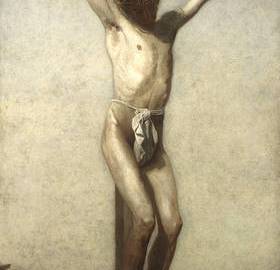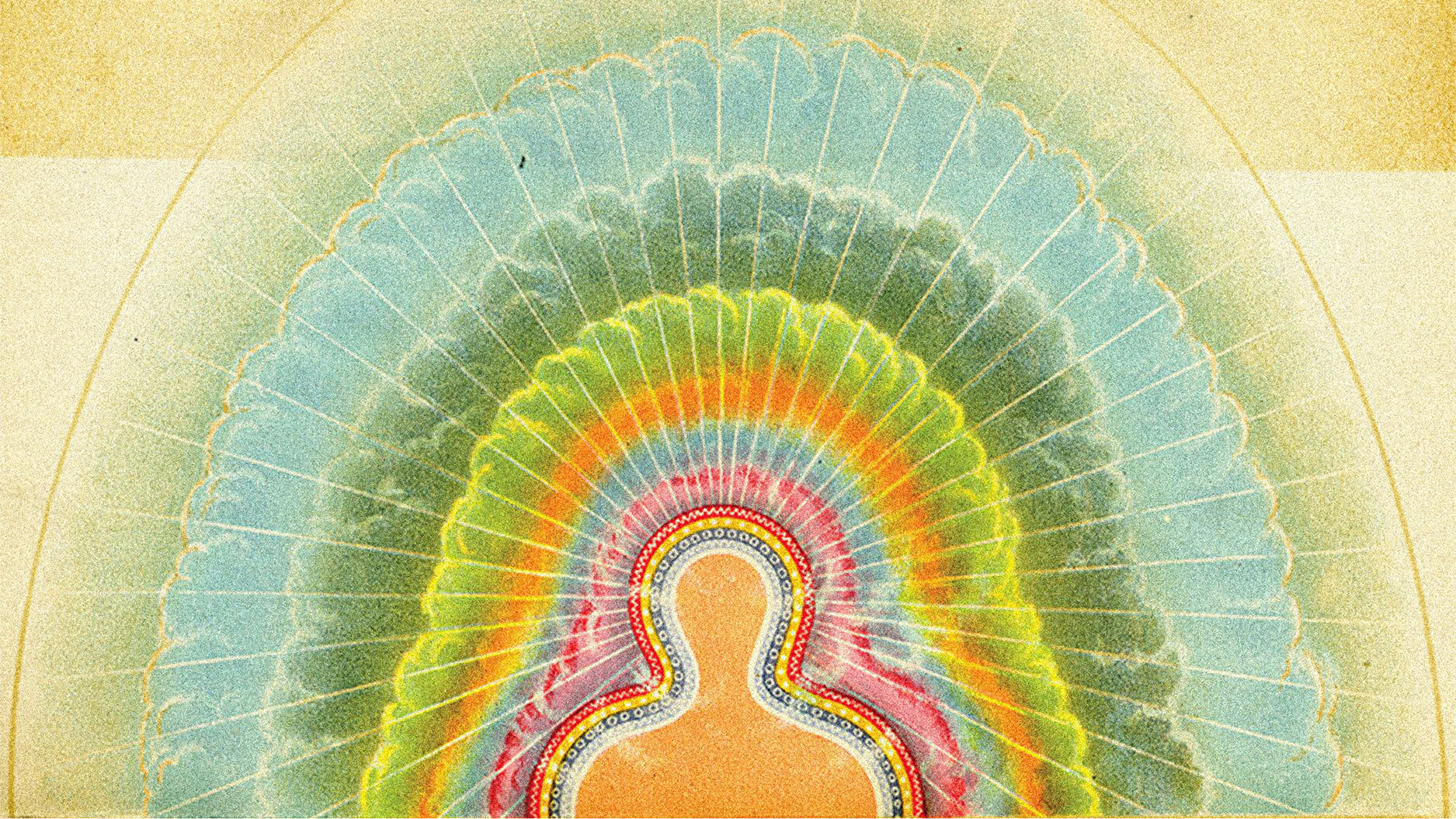Behold the Man: Eakins, the Human Body, and History

In 1886, shortly after his dismissal as director of the Pennsylvania Academy of Fine Arts in a cloud of scandal, Thomas Eakins changed the title of his 1880 painting Crucifixion (shown above) to Ecce Homo, “Behold the Man,” the words Pilate used to announce Christ to the public that would call for his execution. In the eyes of Akela Reason in her Thomas Eakins and the Uses of History, the change represents how Eakins viewed and used history to his own ends. “Eakins’s new title not only reinforced the corporeal presence of the subject but also pointedly alluded to the injustice of Christ’s execution at the hands of an unruly mob,” Reason writes, “a situation that he may have believed, perhaps even unconsciously, paralleled his own.” According to Reason, Eakins used history to his own ends, stretching and altering it to support his view of the study of the human form as the centerpiece of all art—a humanism that touched not only upon religion, but also upon who would rise to the pantheon of art history, a goal Eakins never gave up even at his lowest moments.
Reason, an art history professor at Georgia State University, begins with a study of Eakins’ paintings of American colonial era sculptor William Rush, who had fallen into obscurity by the time Eakins first painted him in 1875. “[A]n American Old Master, in the days before anyone knew that such a person could exist,” Reason says of Rush, before demonstrating how Eakins’ canonized the sculptor in a way similar to the elevation of European masters. From early on, Eakins expressed an interest in doing “big pictures” that would bring a lasting legacy more than financial support. The reputation consciousness led Eakins to pave the way, using Rush as his predecessor, for the consideration of an art history tradition in the still-young American nation. Building on the already growing professionalization of art criticism in America bolstered by historical art exhibitions in Brooklyn in 1872 and the 1876 Centennial Exhibition, Eakins simply added through his Rush paintings to the growing sense of a cultural tradition he desperately wanted to become a part of.
In chapters devoted to Eakins’ colonial revival works and antique or arcadian pictures, Reason resolves through her thesis how the “ultimate realist” Eakins could indulge in sentimental reveries in the near and distant past. Focusing on Eakins view of female students and theories of the time that intense intellectual work could physically harm women, Reason reasons that Eakins turned to the American colonial past, symbolized by a spinning wheel in many of his pictures, as a safer type of existence for young women, many of whom seemed bent on (theoretically) self-destructive careers in art.
The arcadian or Greek-inspired paintings and photos serve to support Eakins’ ever-present belief in the primacy of studying the human form to make great art. If it was good enough for Greeks such as Phidias, then it was good enough for modern artists. Earlier, when painting Rush sculpting from a model, Eakins exercised creative license in painting Rush’s model in the nude, even though no evidence exists that she was nude, including the final, clothed sculpture itself. Eakins’ rewriting of Rush’s working methods actually resulted in a rewriting of Rush’s biography itself, which came to resemble increasingly Eakins’ own over time. Thus, Eakins not only found a predecessor, he sculpted his sculptor to become the perfect predecessor.
Perhaps the finest chapter tackles the conundrum of Eakins’ Crucifixion painting, the only religious subject Eakins ever painted and one he often presented as his signature work for exhibitions during his lifetime. Patterned on previous models for crucifixions, including most notably Velazquez’s Christ on the Cross, Eakins specifically emphasized the physicality of Christ over any divine nature. That emphasis, as well as remarks made by Eakins, leads many scholars to read Eakins as irreligious. Reason counters that Eakins’ approach matches that of one of his Parisian instructors, Leon Bonnat, whose 1874 Le Christ had just caused a Salon sensation. Tracing Eakins’ view of Christ to Ernest Renan’s influential Life of Jesus, Renan argues that Eakins paints as just another one of the “liberal thinkers who.. questioned the accuracy of the Gospels and sought a more human and historically accurate picture of the events of the Bible,” including the story of Jesus Christ. Eakins sees Jesus as God’s “human prophet,” rather than part of a Trinity, Reason asserts, and thus, while “acknowledge[ing] Jesus’s exemplary status,… limit[s] his powers to the terrestrial sphere.” Eakins thus brings Jesus down to Earth through his realism and makes him more human and, in his eyes, more relevant to human spirituality. Eakins knew that such a position wouldn’t sit well with American Protestants, his primary audience, and, as Reason puts it, “counted on it,” hoping for the media and critical attention such shocking ideas would bring and, thus, add to his growing reputation.
Throughout Thomas Eakins and the Uses of History, Reason approaches and clears such hurdles in Eakins studies with intellectual athleticism and elan. Since the glorification of Eakins by Lloyd Goodrich, his earliest biographer, up to the eloquent, Freudian hatchet job of Henry Adams in Eakins Revealed, the study of Eakins has been one of the great minefields of American art history. Tread lightly, if you dare tread at all. Reason goes where other art historians fear to tread and allows us to behold a more coherent and admirable Eakins, one who simply wanted to be known for great art even if he had to suffer for it. Fortunately for Eakins, fame and acceptance finally came towards the end of his life. “The twentieth century brought Eakins honors, commissions, and praise,” Reason writes, noting that Ecce Homo was once again retitled Crucifixion. America and the art world had finally beheld Eakins and his figure-centered methods and accepted him into the pantheon he helped create. Thomas Eakins and the Uses of History reminds us that art history didn’t always exist as we knew it, and might not exist as it we know it today if not for the efforts of Eakins and others.
[Many thanks to the University of Pennsylvania Press for providing me with a review copy of Akela Reason’s Thomas Eakins and the Uses of History.]





